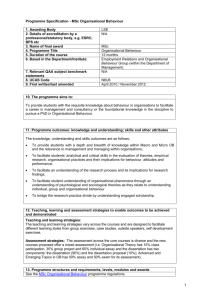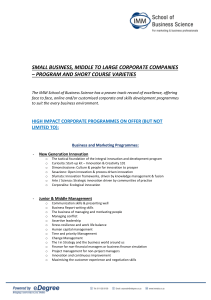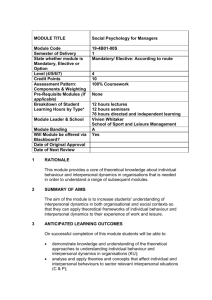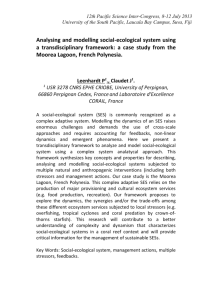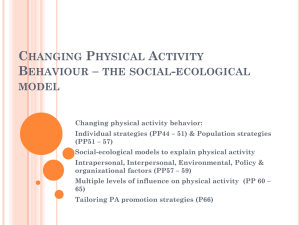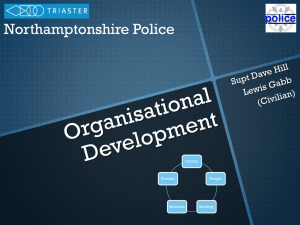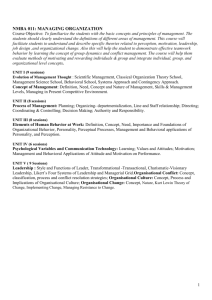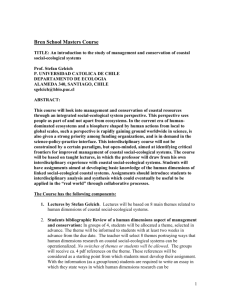Social-Ecological Model: Physical Activity & Health
advertisement
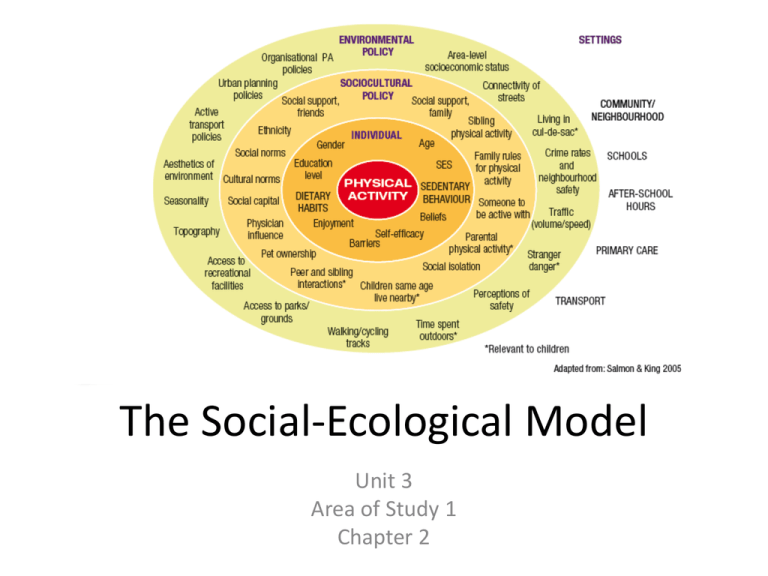
The Social-Ecological Model Unit 3 Area of Study 1 Chapter 2 Why use the social-ecological model? • The social-ecological model helps to identify opportunities to promote participation in physical activity by recognising the multiple factors that influence an individual’s behaviour. Efforts to change behaviour are more likely to be successful when the multiple levels of influence are addressed at the same time. Socio-ecology : the study of how social structure is influenced by an organism’s environment There are four components that influence the social-ecological model 1. The Individual 2. Social Environment (interpersonal) Factors 3. Physical Environment 4. Organisational and Policy Change The Individual (Intrapersonal) Factors The individual is at the centre of the social-ecological model. This level includes personal factors that increase or decrease the likelihood of an individual being physically active. Individual factors which influence physical activity participation include… -Attitudes - Behavious - Self-concept - Behavioural skills (goal setting) - Knowledge (advantages of being active) Intervention strategies at the Individual (Intrapersonal) level Strategies which bring change at the individual level tend to focus on changing an individual’s knowledge, attitudes, behaviour and skills. Intervention Strategies - Educational programmes - Support groups - Organisational incentives directed at individuals - Counselling - Targeting individuals through mass media to help them consider being more active Social Environment (Interpersonal) Factors The social environment comprises the relationships, the culture and the society with whom the individual interacts. The social environment has a significant influence on physical activity behaviour. For example, having someone such as a peer, family member or work colleague to be physically active with can impact on physical activity behaviour. The social environment includes… -Family -Peers -Cultural background -What is ‘normal’ in the community -Institutions (schools, organisations, workplaces) -Socio-Economic Status (SES) Learning Activity • Outline three examples of Social Environment (Interpersonal) factors that negatively influence your activity levels • Now think of a strategy that will bring about change at the Social Environment (Interpersonal) level for each of these Intervention strategies at the Social Environment (Interpersonal) level Strategies which bring change at the social environment level include… -Community education -Support groups -Peer programs -Workplace incentives -Social marketing campaigns These are all always of promoting positive community attitudes and awareness to participation in physical activity. Physical Environment Physical environment includes the natural environment and the built (or man-made) environment. The Natural Environment The Built Environment Grasslands and Parklands Ovals Beaches Swimming Pools Lakes Office Building Rivers Pathways and boardwalks Physical environments can have a positive or negative influence on the amount and type of physical activity Ovals, swimming pools and pathways are designed to encourage PA However an office building is not necessarily an environment wher people would want to participate in PA Learning Activity • Outline three examples of Physical Environment factors that negatively influence your activity levels or people in your community • Now think of a strategy that will bring about change at the Physical Environment level for each of these Intervention strategies at the Physical Environment level • Improved accessibility, e.g. Introducing ramps or smooth surfaces so that people using wheelchairs can access the area safely. • New recreational or sporting facilities may be built close to a school, community shopping centre or aged care facility to ensure they are accessible to specific target groups. • Traffic calming to increase safety for pedestrians may be introduced around school areas in order to encourage more children to walk or ride bicycles to school. Organisational and Policy Change • Organisational factors are characteristics of social institutions, this includes rules (formail & informal), regulations, guidelines and governance of operation. • Organisational factors often restrict the opportunity for physical activity. Learning Activity Read Pg 62; Paragraph 2 of the text Intervention strategies at the Organisational and Policy Change level • Organisational Intervention Strategies – – – – – Creating incentives for people to be active Making changes to staff benefits (subsidied gym memberships Making changes to the structure of the day (extended breaks) Promote group activities (walk-to-school/work) Create links with health-enhancing organisations (arrange discount memberships) • Policy Intervention Strategies – Paying workers more if they use a gym – Mandated time allocation that every student must receive 100 mins PE and 100 mins Sport Ed each week (State policy) – 40km/hr speed linit around all schools (State law) Bringing it all back together
